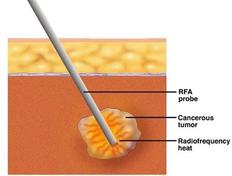
5 Key Advantages and disadvantages of Microwave Ablation
Explore the uses, 5 advantages and disadvantages of microwave ablation.
Showing 25 posts (Page 1 of 2)
Advertisement

Explore the uses, 5 advantages and disadvantages of microwave ablation.

Explore the key differences between Backward Wave Oscillators (BWOs) and Traveling Wave Tubes (TWTs), including direction of propagation and applications in RF systems.

Explore the benefits and drawbacks of BARITT diodes, including noise, bandwidth, power handling, and efficiency. Learn about their applications in mixers, oscillators, and amplifiers.

Explore the distinctions between Backward Wave Oscillators (BWO) and Backward Wave Amplifiers (BWA) in RF and microwave technology, including their applications, principles, and features.

Explore the pros and cons of Backward Wave Oscillators (BWOs), including O-type and M-type versions. Learn about frequency tuning, power output, bandwidth, and efficiency.

Explore the pros and cons of Crossed Field Amplifiers (CFAs), including their high efficiency and wide bandwidth, alongside limitations like low gain and high noise output.
A comparison of ferrite diodes and P-I-N diodes, highlighting the key differences in speed, loss, cost, weight, and power handling.

Learn about the fundamentals of GUNN diodes, including their operation, advantages, disadvantages, and applications in microwave technology.
Explore the key differences between Gunn, Impatt, Trapatt, and Baritt diodes, including their specifications, applications, and performance characteristics.

Comparison of Gyrotron, Magnetron, Orbitron, Peniotron, and Ubitron microwave devices, highlighting key differences in operation, frequency, and applications.

Explore the benefits and drawbacks of IMPATT diodes, highlighting their applications, high-frequency operation, and limitations like noise and efficiency.
Explore the key differences between Impatt, Trapatt, and Baritt diodes, including their operating principles, advantages, disadvantages, and applications.

Explore Klystron and Gunn diode microwave test benches, their block diagrams, and components used for microwave module testing.

Explore the advantages and disadvantages of klystron tubes, highlighting their characteristics, applications, benefits, and limitations in microwave technology.

Compare Klystron vs magnetron and explore difference between klystron and magnetron including their functionality, applications and key characteristics.

Explore the applications of the magic-T (hybrid tee) in E-H tuners for impedance matching and balanced mixers in microwave receivers.

Explore the advantages and disadvantages of magnetrons, high-power microwave oscillators used in radar systems and microwave ovens. Learn about their benefits and drawbacks.

Explore the pros and cons of MESFETs (Metal-Semiconductor Field-Effect Transistors), including benefits in microwave applications and limitations in gate voltage.

Explore microwave attenuators, their functions in managing signal strength, and various types used in communication and radar systems, including fixed and variable attenuators.
Learn about microwave semiconductor devices, including diodes and transistors, and their applications in high-frequency circuits. Discover different types, materials, and uses.
Explore the fundamental differences between microwave transistors and TEDs (Transfer Electronic Devices) in terms of structure, materials, and applications.

This article compares microwave and solid-state RF energy heating ovens, highlighting their key differences and the advantages of solid-state technology.

An overview of MMICs (Monolithic Microwave Integrated Circuits), covering their construction, biasing techniques, and key manufacturers. Learn about hybrid vs monolithic ICs.
Explore the differences between monolithic and hybrid MICs, focusing on construction, materials, frequency suitability, and component integration.
Explore the basics of PIN diodes, their unique structure with an insulating layer, and their applications in RF, Microwave, Optical, Medical, electronics, automotive and defense domains.
Advertisement